When remodeling or building a kitchen, countertops often play a pivotal role in both functionality and aesthetic appeal. However, upgrading your kitchen countertops doesn’t have to break the bank. Cost-effective kitchen countertops offer a balance between affordability, style, and durability, allowing homeowners to achieve their dream kitchen on a budget. Understanding your options, the materials available, and ways to maintain them can help you make an informed decision without compromising quality or design.
Laminate countertops are perhaps one of the most popular cost-effective options available. Known for their affordability, laminate countertops are constructed with layers of paper or fabric impregnated with resin and bonded to particleboard. They come in an astonishing array of colors, patterns, and textures, many of which can mimic the look of more expensive materials like granite, quartz, or wood. In my experience, laminate countertops are easy to install and maintain, making them a top choice for DIY enthusiasts. While they may not have the heat resistance or scratch resilience of some higher-end materials, proper care can extend their lifespan significantly. Regularly using cutting boards and avoiding direct contact with hot pots or pans can keep laminate countertops looking new for years.

Butcher block countertops offer another affordable yet stylish option. These are crafted from strips of wood glued together to form a solid surface. If you’re looking for a warm, rustic charm, butcher block countertops are ideal. They’re typically less expensive than stone or engineered surfaces, and their natural finish brings a cozy, organic feel to any kitchen. I find butcher block countertops easy to work with because they can be sanded down and refinished if they suffer scratches or stains. Regular oiling helps maintain their moisture resistance, and with proper care, they can last decades. One potential downside is that wood is susceptible to water damage if not properly sealed, so I recommend vigilance around sinks and dishwashers.
Tile countertops are another budget-friendly option that allows for a high degree of customization. Ceramic or porcelain tiles can create a unique and artistic countertop surface. One of the greatest advantages of tile is its versatility—it can be used to create intricate patterns or simply cover large areas with uniformity. From a practical perspective, tiles are highly resistant to heat and stains, which makes them great for avid cooks. The only challenge I’ve noticed is maintaining the grout lines, which can stain or harbor bacteria if not properly sealed. A good grout sealer and regular cleaning can mitigate this issue effectively.
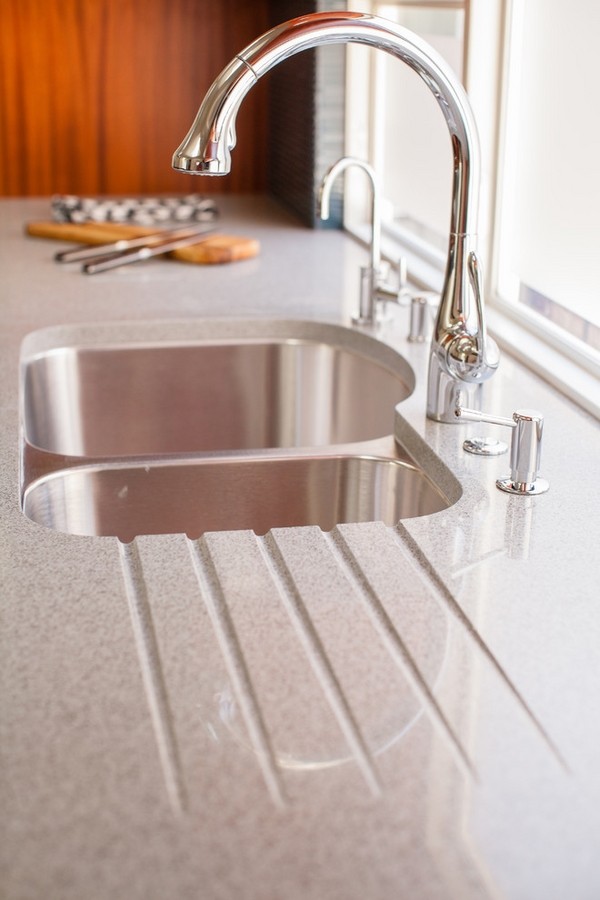
Concrete countertops are gaining popularity for their industrial and modern appeal. Surprisingly, concrete can be a very cost-effective material, especially if you opt for DIY installation. When sealed properly, concrete countertops offer excellent durability and resistance to heat and scratches. They can also be tinted or stained to match your kitchen’s aesthetic. While concrete can occasionally crack over time, I’ve found that proper reinforcement and sealing can prevent most issues. They may require a bit more upkeep than some other materials, as regular resealing is necessary to prevent stains and water damage.
Recycled materials are an innovative and eco-friendly option for those seeking cost-effective kitchen countertops. Options include surfaces made from recycled glass, paper, or metal composites. These materials often combine sustainability with style, resulting in countertops that are both affordable and environmentally conscious. I’ve worked with recycled glass countertops that reflect light beautifully and add a touch of sophistication to the kitchen. They’re durable and available in a variety of colors, though they can sometimes be prone to chipping. Careful handling during installation and regular maintenance can ensure their longevity.

Quartz alternatives or engineered stone surfaces, though not as cheap as laminate or tile, are still an affordable choice compared to natural stone countertops. They are made by blending quartz particles with resin, creating a durable and non-porous surface. While they may lack the uniqueness of natural stone, quartz alternatives come in a wide range of patterns and colors, many of which mimic marble or granite. In my opinion, their ease of maintenance makes them a worthwhile investment for those seeking a long-term solution. They’re resistant to stains, scratches, and heat, requiring only minimal cleaning to maintain their appearance.
For those who love the look of natural stone but are on a tight budget, modular granite is worth considering. Unlike traditional granite slabs, which can be quite expensive, modular granite consists of smaller, pre-cut pieces that are easier to install. This significantly reduces labor costs and material waste. Modular granite offers the same luxurious look as its slab counterpart, and with proper sealing, it remains resistant to stains and scratches. However, I recommend inspecting modular granite before purchase, as inconsistencies in color or pattern can sometimes occur.
Another underrated option for budget-conscious homeowners is stainless steel countertops. While traditionally associated with professional kitchens, stainless steel is becoming a trendy, cost-effective choice for home kitchens as well. It’s durable, hygienic, and resistant to heat and stains. I appreciate its ability to blend seamlessly with modern or industrial kitchen designs. Stainless steel can show scratches and fingerprints over time, but with proper cleaning and maintenance, it continues to shine.
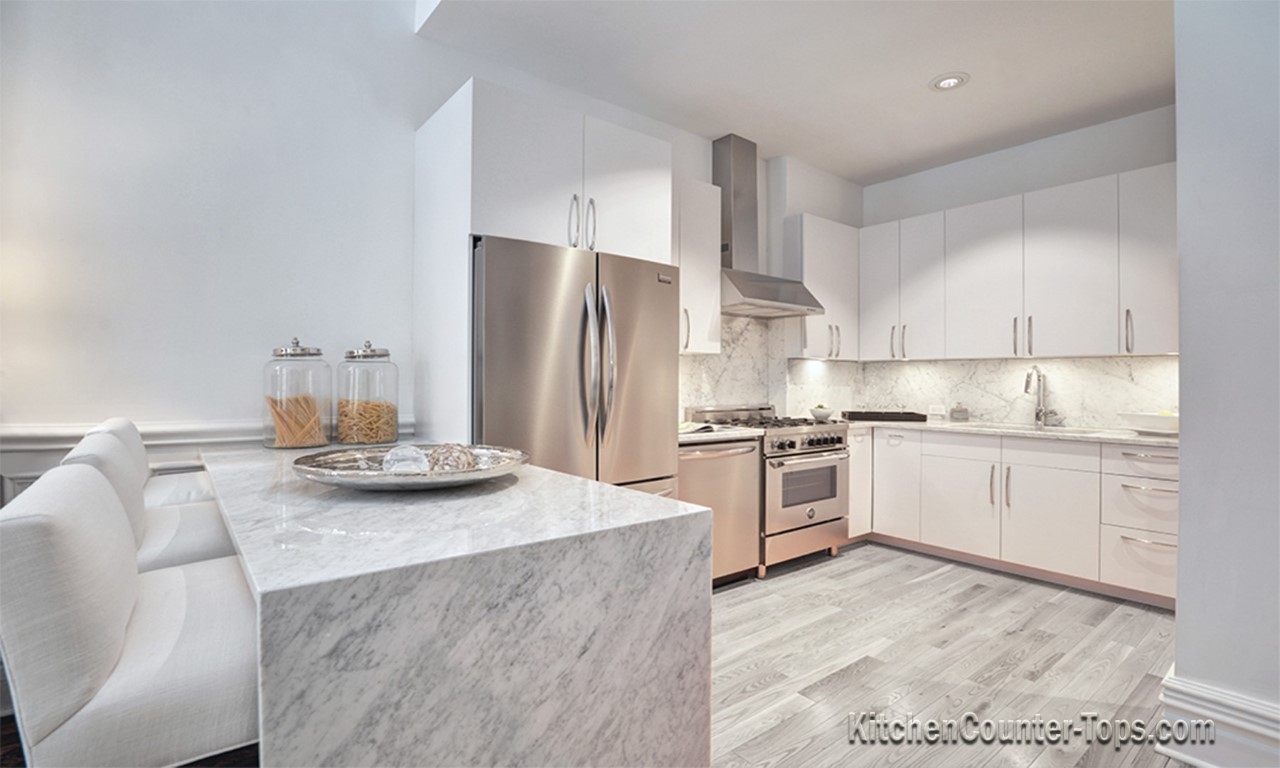
Upcycled countertops are a creative way to save money while adding a personal touch to your kitchen. Materials like reclaimed wood, salvaged stone, or repurposed tiles can be transformed into stunning countertops. Not only does this approach reduce costs, but it also adds character and uniqueness to the kitchen. In my experience, upcycled materials often require more time and effort to source and prepare, but the result is always worth it.
While selecting cost-effective countertops, don’t overlook installation methods as a way to save money. Choosing prefabricated countertops or opting for a DIY installation can significantly reduce expenses. However, I recommend assessing your skill level honestly before attempting a DIY project, as improper installation can lead to costly repairs down the line.
Finally, consider combining different materials to create a functional and visually appealing kitchen within your budget. For instance, using an affordable option like laminate or tile for the main countertop area while splurging on a small section of high-end material like quartz or granite can offer the best of both worlds. This approach allows you to allocate your budget strategically while achieving a luxurious look.

Common Mistakes to Avoid
Overlooking Durability: Many homeowners focus solely on cost without considering how well a countertop will hold up over time. A cheaper material that requires frequent repairs or replacement will cost more in the long run. Always balance initial cost with durability and maintenance needs.
Ignoring Maintenance Requirements: Some cost-effective materials, like wood or concrete, require regular upkeep to maintain their appearance and functionality. Neglecting these needs can lead to premature damage or wear.
Improper Sealing: Materials like concrete, butcher block, or modular granite often need sealing to protect against stains and water damage. Skipping this step can lead to expensive repairs or replacements.
Choosing the Wrong Material for Your Lifestyle: Not all materials are suited for every household. For example, families with young children may find tile countertops impractical due to the maintenance of grout lines.
Neglecting Aesthetic Consistency: While it’s tempting to focus on affordability, ensure that the countertops complement the overall design of your kitchen. Mismatched styles can detract from the kitchen’s appeal and reduce home value.
Underestimating Installation Costs: While the material might be affordable, professional installation can be expensive. Always factor in installation costs when calculating your budget.
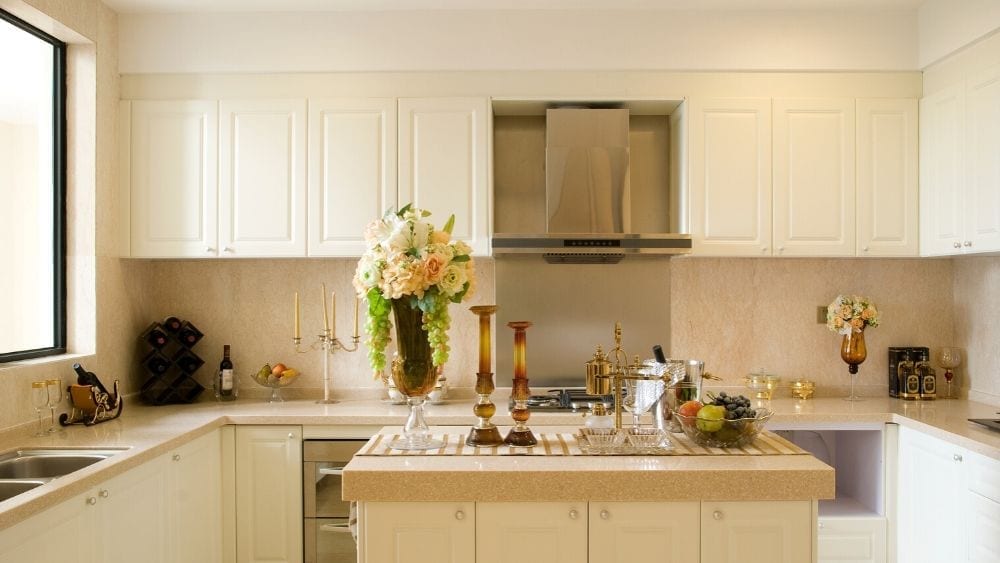
What is the cheapest kitchen countertop material?
In my opinion, laminate countertops are the most budget-friendly option available. They are widely accessible, come in a variety of designs, and mimic the appearance of more expensive materials like granite or marble. Their affordability and ease of installation make them a popular choice for homeowners looking to save on kitchen upgrades.
Are cost-effective countertops durable?
Yes, many cost-effective countertops are durable when properly maintained. Materials like tile, quartz alternatives, and butcher blocks can last for decades with regular care. Even laminate, often considered less durable, can withstand years of use if you avoid exposing it to extreme heat or sharp objects.
Can I install countertops myself to save money?
DIY installation can significantly reduce costs, especially with materials like laminate, tile, or butcher block. However, it’s crucial to ensure that you have the necessary tools and skills before attempting installation. Mistakes can be costly to fix and might negate any initial savings.

How do I maintain cost-effective countertops?
Maintenance depends on the material. For instance, laminate requires only basic cleaning, while butcher block needs regular oiling and concrete benefits from periodic resealing. Always follow the manufacturer’s recommendations for cleaning and care to extend the lifespan of your countertops.
Are recycled materials a good option for kitchen countertops?
Yes, recycled materials are an excellent choice for eco-conscious homeowners. They combine affordability with sustainability and often feature unique designs. Recycled glass or paper-based countertops are durable and stylish but may require careful handling to prevent chipping or cracking.
Can I mix countertop materials to save money?
Mixing materials is a smart strategy to balance cost and style. For example, using an affordable option like laminate for the main countertop area while incorporating a small section of high-end material like granite can give your kitchen a luxurious look without exceeding your budget. This approach allows for flexibility and creativity in kitchen design.
Countertop Guides Consumer Buying Guide to Bathroom and Kitchen Countertops
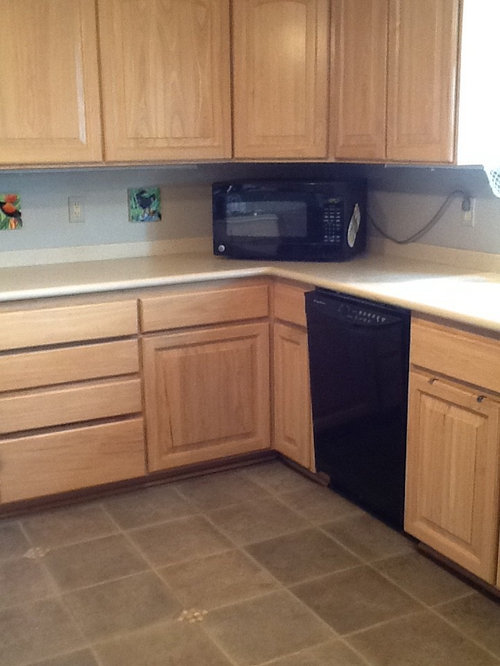
Kitchen Countertop Ideas 101
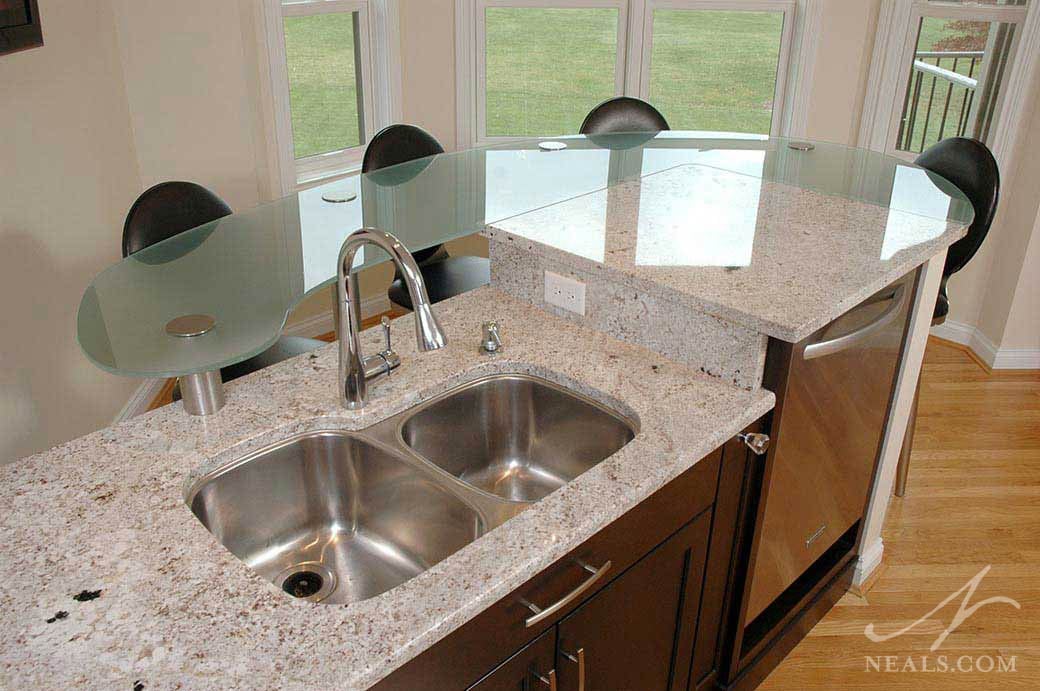
Common Edging for Kitchen Countertops

All You Need to Know About Soapstone Countertops

Related Posts:
- Kitchen Countertops Atlanta
- Best Affordable Kitchen Countertops
- Kitchen Countertops Durham Nc
- Kitchen Countertop And Backsplash Combinations
- Miracle Method Kitchen Countertop Resurfacing
- How To Redo Kitchen Countertops On A Budget
- Kitchen Countertops Asheville Nc
- How To Paint Kitchen Tile Countertops
- Brown Kitchen Cabinets With Granite Countertops
- Quartz Kitchen Countertop Ideas